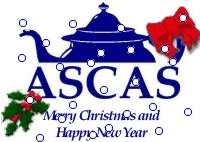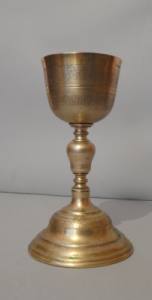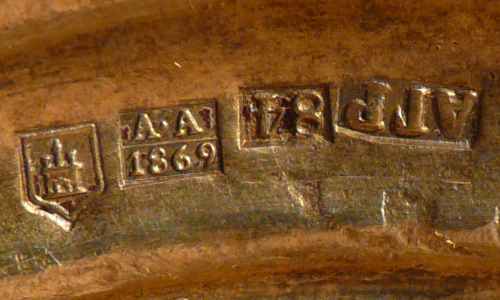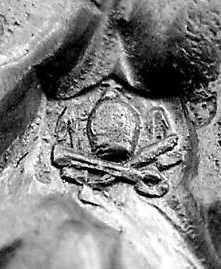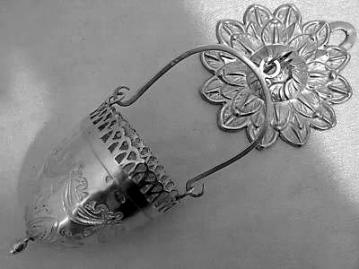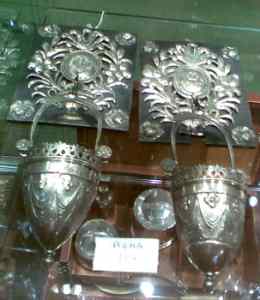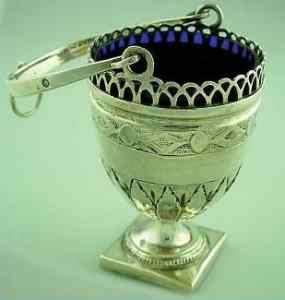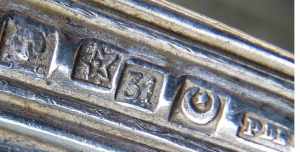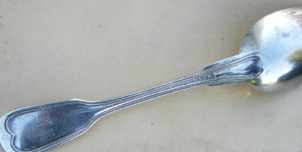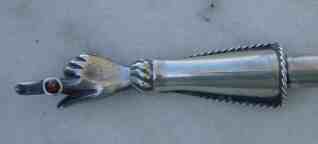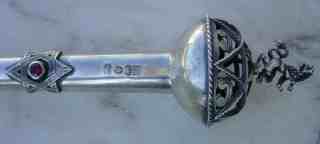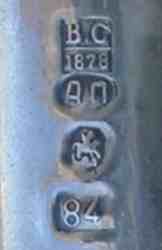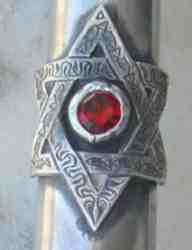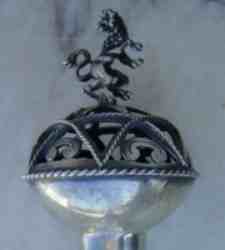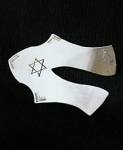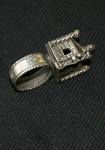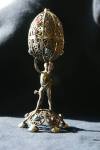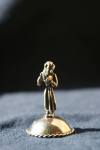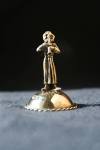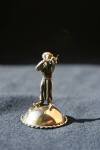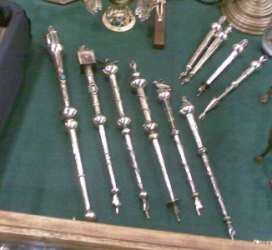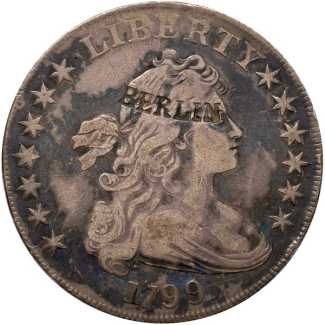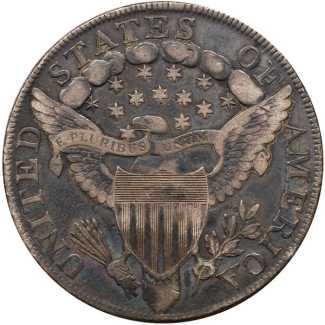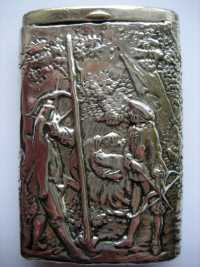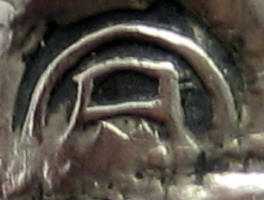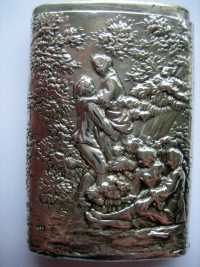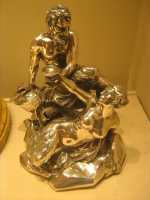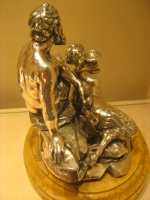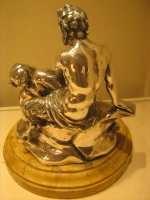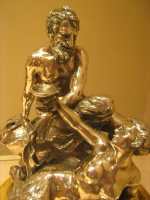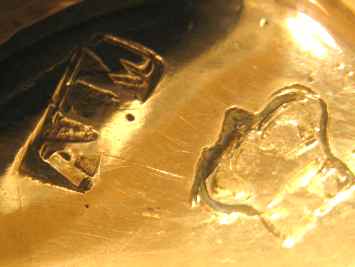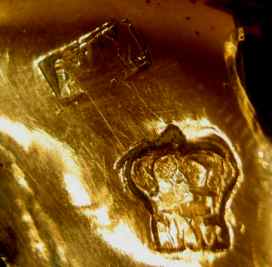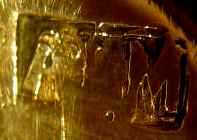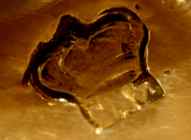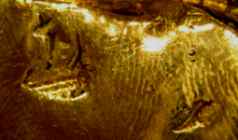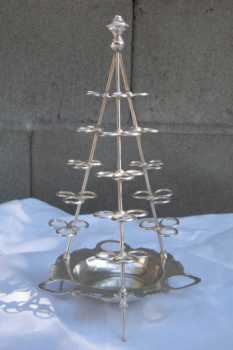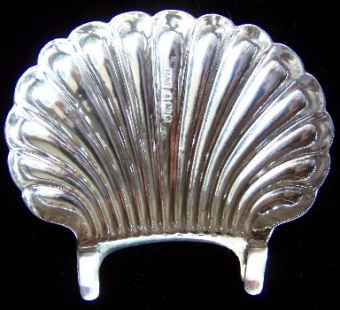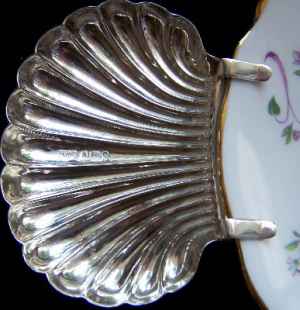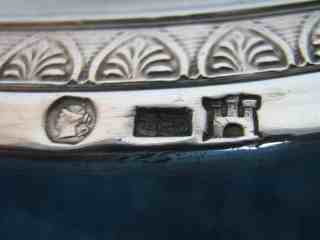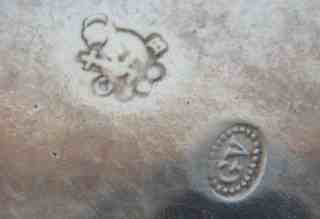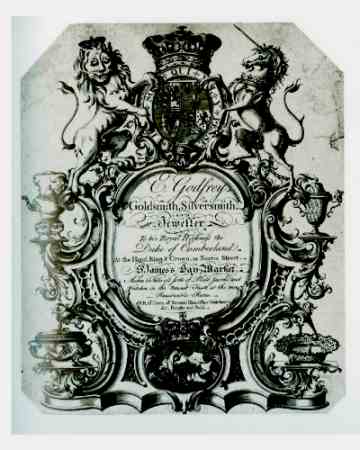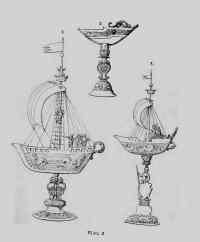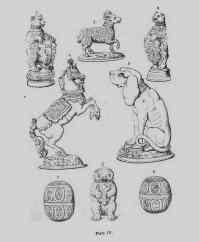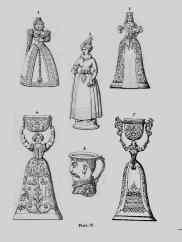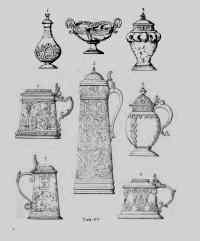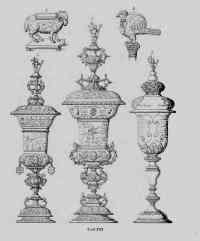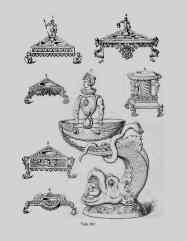 newsletter # 55 - DECEMBER 2008
newsletter # 55 - DECEMBER 2008www.ASCASonline.org
email: silverassociation@yahoo.it
YOUR GUIDE TO DECEMBER NEWSLETTER:
articles new members
members' window
|
2009 ASCAS membership
No fees are requested nor accepted for ASCAS membership.
Members still interested to ASCAS and its activity are invited
to send an e-mail to
confirming their 2009 membership (the simplest way is to
use the 'reply' button on our December e-mail).
I apologize for this little effort requested to whomever
appreciates and supports ASCAS activity.
No action is requested to unsubscribe. Members not confirming
their membership will be automatically deleted from the sending of
our monthly Newsletter and will be suspended on February
2009.
Giorgio Busetto
ASCAS Secretary
Two new articles for ASCAS website
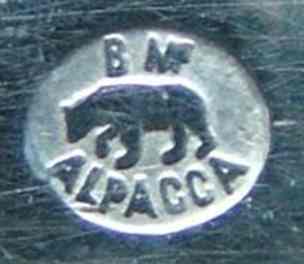
Prof. David N. Nikogosyan from Ireland presents a new article about |
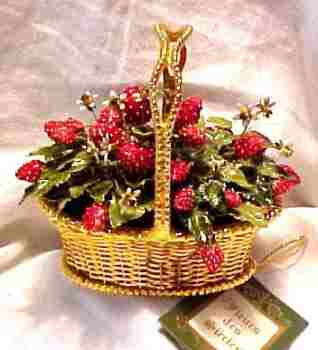
An explosion of colors in the article presented by
Dorothea Burstyn |
New members
Welcome to new ASCAS members:
H.W.B. Elston - South Africa
Steve Fisher - England UK
Pamela Gustin - USA
Lisa Kichener - USA
Michela Marchetto - Italy
Stefan Miller - England UK
Terence Anthony Morgan - South Wales UK
Kelli Rooney - USA
Graham Stapleton - England UK
Floyd Wiggins - USA
|
top page -
page map |
Members' Window # 55
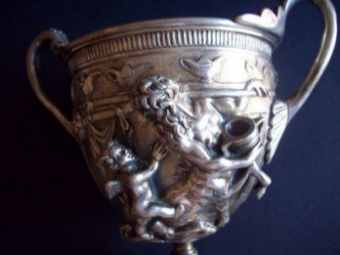
Giorgio Busetto presents:
|
Mail to ASCAS: e-mail silverassociation@yahoo.it
Guillaume Bernard writes:
... I need your help to identify the marks of this silver
chalice.
Merci d'avance pour votre aide.
Guillaume Bernard
Chercheur
Service de l’Inventaire du Patrimoine
Collectivité Territoriale de Corse
Ajaccio - France
The hallmark of this chalice is Russian and refers to:
Town of Gitomir,
assayer AA = A. Arzhanihov (active 1865-1874)
silversmith AGR (Cyrillic) = not identified
Giorgio Busetto
Ginter Christophe writes:
... Please let me know about the attached Italian mark (from
Rome presumably).
What does it means and usage period?
Many thanks in advance.
Christophe
This mark was used in the Stato Pontificio (Rome - Papal
State) from 1815 to 1870 for works of 889/1000 silver fineness.
The maker is Angelo Giannotti, active in Rome from 1824 to 1865.
Your item is a holy water font. I have an image (unfortunately,
not of high quality) of a couple of similar holy water fonts (made
in Rome) hanging from their wall support holders. These holy
water fonts were used in pairs and hung at both sides of the
conjugal bed (below left).
A less common example, similar in construction but standing on a
base, was presented in the April 2008 Newsletter of Silver Society
of Australia (below right: courtesy Patrick Street, SSA)
Giorgio Busetto
Gary Barborin writes:
... I have some silver spoons (I'm not sure they are sterling
silver) and I'm unable to identify the maker and their origin.
I'd greatly appreciate your help.
Thanks
Gary Barborin
I'm unable to identify these marks (your spoons are
silver plate and not solid silver).
Any help will be welcome
Giorgio Busetto
Fernando Viana writes:
... I have bought this yad in local street market, and only
later I decided to search the Internet looking for qualified
comments on it.
I now have my doubts about the authenticity of the hallmarks, as
I suspect this piece is not so old.
Would you kindly favour me with your comments on the subject?
Thank you so much in anticipation.
Kind regards
Fernando Viana
In my opinion your item isn't ancient Russian silver but
a modern reproduction. Obviously this isn't an appraisal but
only my thought.
In my website there's a page devoted to
Fakes on Russian Silver , but many other "dubious" pieces
are available on the web. Below a "selection of ...(pseudo)
ancient Russia" pieces with two "new entries": the circumcision
clasp and the wedding ring.
... and a wide array of "antique Russia silver yad" proudly exhibited on a street market
Giorgio Busetto
Dave Wnuck writes:
... I am a coin collector and dealer in the US. We recently came
across a 1799 silver dollar counterstamped with a hallmark that
is unknown to the coin collecting community.
This hallmark was stamped on a 1799 US silver dollar. Based on
the wear on the coin, it may have been stamped during the
1810-1850 time period, but that is just a guess.
It was originally purchased in an estate sale in Connecticut.
There are towns named Berlin in Connecticut, Massachusetts,
Vermont, New Hampshire, Maryland and perhaps elsewhere in the
USA. It may be the counterstamp of a gunsmith, blacksmith,
metalsmith, clockmaker, etc. and not a silversmith. The hallmark
may or may not be of US origin.
Any help from your membership would be most appreciated.
Sincerely,
Dave Wnuck
I hope that ASCAS readers may supply some information
about this overstamped coin
Giorgio Busetto
Robert Massart writes:
... Recently I acquired a silver vesta case but can't trace back
the maker. I contacted the local silver museum but the experts
do not know the mark either. The experts assume it is Hanau
silver.
Do you have an idea?
Hereafter the description of the vesta case: Antique solid
silver draw vesta case, probably manufactured in Hanau. The
outer sleeve is repoussé with two different scenes on
either side, featuring full figures of 18th century styled
gentry. The detail in these figures is stunning. On one side it
shows a bird hunting scene with two gentlemen firing arrows into
the trees with a bow, while behind them in the brushes a man on
his knees is kissing a woman. The other side of the body shows
an erotic scene of two couples in the bushes. The activity of
the first couple leaves nothing to the imagination of the viewer
while the second couple, sitting on the ground, is watching the
scene. This vesta case was for sure designed as a gentleman’s
case.
The gold wash inside the metal drawer is partially worn and the
striker is heavily eroded. The silver body is in good condition
and shows no damage. The vesta case measures 60mm high, 40mm
wide, 12 mm deep and weighs 50 grams. The side of the sleeve is
hallmarked with 800 for the silver fineness and the letter "A"
surrounded by a semicircle.
Thanks for your advice.
Kind regards,
Robert
The taste of this vesta case is typical of Hanau silver.
Any suggestion about the mark will be highly appreciated.
Giorgio Busetto
José Luis Muñoz writes:
...I'm unable to identify the marks of this item. Maybe they are
Italians. Any idea?
Un cordial saludo
José Luis
The images of these hallmarks are not well readable.
My hypothesis is that these marks are of the Kingdom of Naples
(a crown over NAP). Usually this mark has also a three digit
date, but I found also an example without the date (beginning of
the 19th century).
In this case the silversmith's mark (A.M) may (possibly) belong
to Antonio Maddalena (a documented work c. 1809-1823).
This is, obviously, only a faint hypothesis. Any further
contribution or correction will be welcome.
Giorgio Busetto
Replies to questions
| Stephanie
Andersen receive this reply about her mysterious WMF
object
(see November Newsletter) Mario Galasso writes: ... The maker is the well known Württembergische
Metallwaren Fabrik W.M.F. (its factory was in Mechernich,
Rheinland, Germany).
|
| Sue
Tiffin receives a further reply about her "pip
tray"
(see October Newsletter) Pierre Strobbe writes: ... Pipp- tray's are not only to find in
Belgium. I have a set of 12 of these made in
Germany by J.Bautz in Breslau, Hutschenreuter.
Made for an hotel Berliner Hof, Gottbus. We
still use them indeed and this may be a Belgium
habit: we respect old "tricks"!!!
|
Mario Galasso
supplies further information and
corrections about the silver plates of
José Luis Muñoz
(see November Newsletter) ... "Torretta" is a numerical
mark. Genoa became part of the Kingdom
of Sardinia in 1815 but the ancient mark
was used until 1825. The plate's mark
has a date between 1814 and 1819. The
mark of the female head with "2" isn't
French but a later Kingdom of Italy
hallmarking for 900/1000 silver fineness
of the period 1873/1934.
|
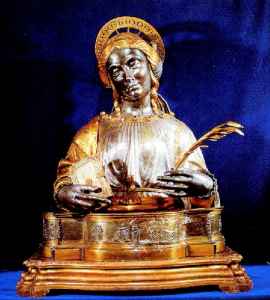
|
RELIQUARYA reliquary is a container
for relics. These may be the
physical remains of saints, such
as bones, pieces of clothing, or
some object associated with
saints or other religious
figures. The use of reliquaries
became an important part of
Christian ritual from at least
the 4th century. Relics are
venerated in the Oriental
Orthodox, Eastern Orthodox,
Roman Catholic and some Anglican
Churches. Reliquaries provide a
means of protecting and
displaying relics. They range in
size from simple pendants or
rings to coffin-like containers,
to very elaborate
ossuaries.......
|
"A BOOK ON MY SHELF"
In this column
we present books, new or ancient,
dealing with silver in all its aspects
(history, marks, oddities...). This
isn't a "book review" but only a fair
presentation of some useful "tools" that
anyone may have in the shelf of his
bookcase.
ASCAS members are invited to contribute
to this column
(click to enlarge images)
The "book on the shelf" of this month presents:
An
Illustrated
DESCRIPTIVE CATALOGUE
of the Collection of
ANTIQUE SILVER PLATE
formed by
ALBERT, LORD LANDESBOROUGH
by Frederick W. FairholtIllustrated
DESCRIPTIVE CATALOGUE
of the Collection of
ANTIQUE SILVER PLATE
formed by
ALBERT, LORD LANDESBOROUGH
PRINTED FOR PRIVATE REFERENCE
by T. Richards, 87, Great Queen Street
(London) 1860
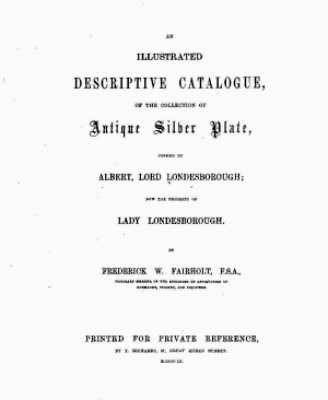 |
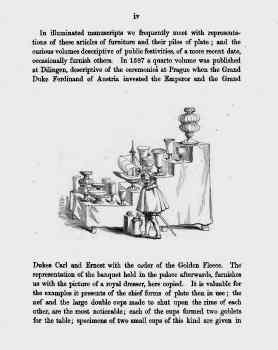 |
Closing our DECEMBER 2008 edition of ASCAS Newsletter I hope you have appreciated its content.
Your comments, suggestions and advice will be of great help.
My thanks to Gary Barborin, Guillaume Bernard, Dorothea Burstyn, Jayne Dye, Mario Galasso Christophe Ginter, Dave Hill, Robert Massart, José Luis Muñoz, Prof. David N. Nikogosyan, Pierre Strobbe, Fernando Viana, Ampelio Vimercati, JoAnne Wilkinson, Dave Wnuck, for their invaluable contributions.
Giorgio Busetto
Secretary
ASCAS is a community of people
having a common interest in antique
silver.
|
|
|
